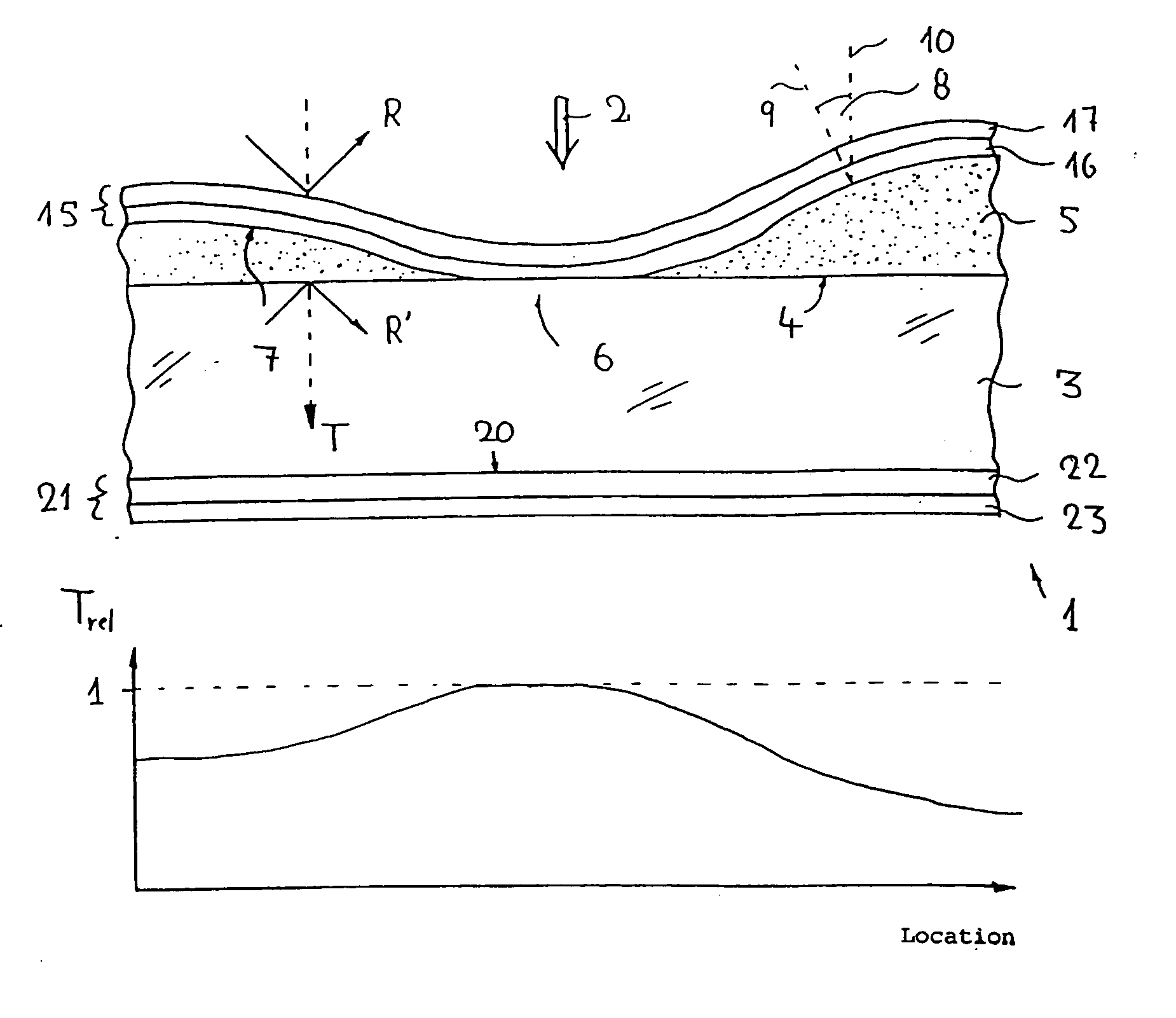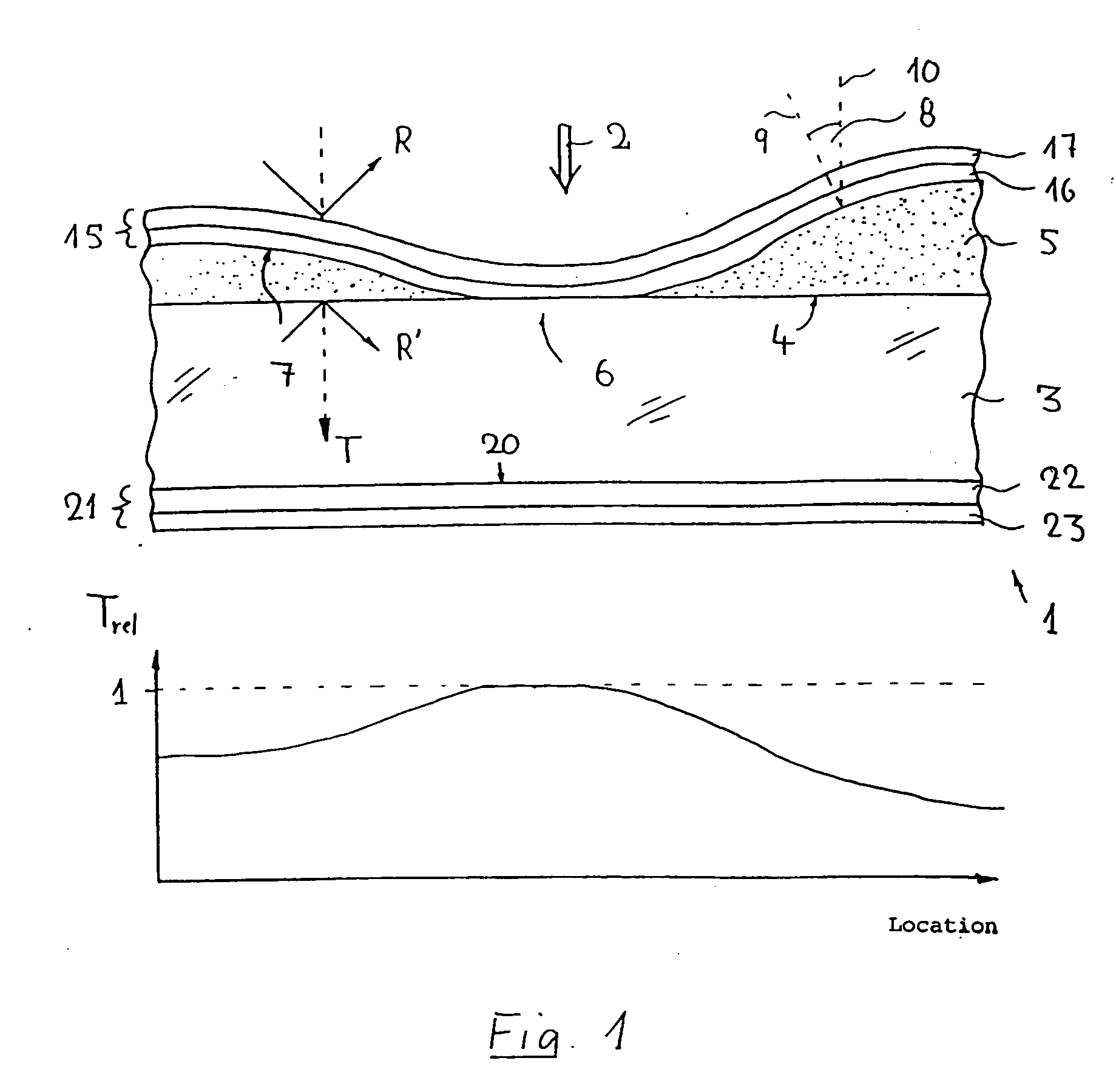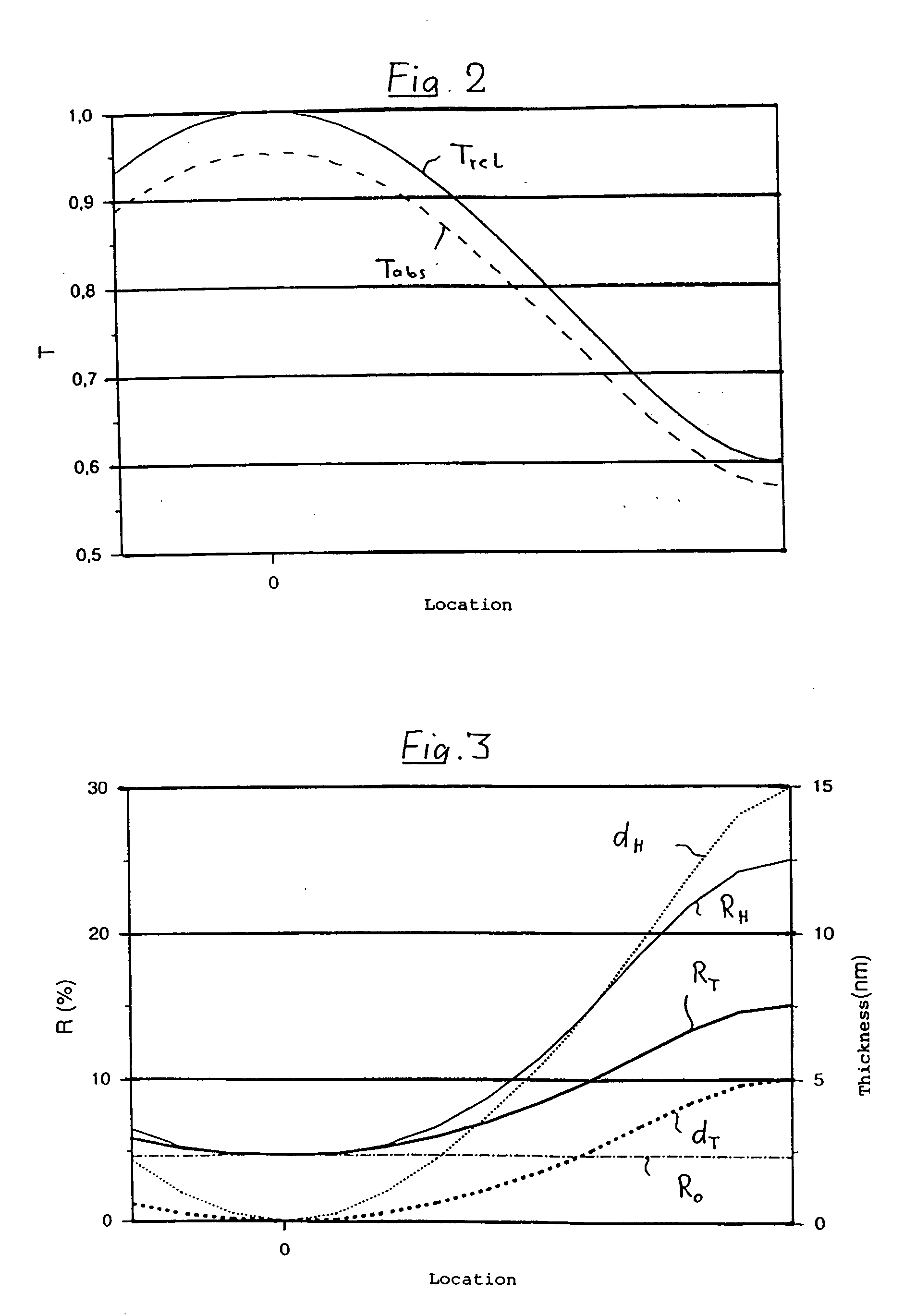Attenuating filter for ultraviolet light
a technology of ultraviolet light and filter, applied in the field of attenuating filters, can solve the problems of inability to meet the requirements of the requirement directly, platinum exhibits intolerably high degradation, and the deviations are often not directly achieved, and achieves the effect of simple and inexpensive fabrication
- Summary
- Abstract
- Description
- Claims
- Application Information
AI Technical Summary
Benefits of technology
Problems solved by technology
Method used
Image
Examples
Embodiment Construction
[0029] The upper illustration of FIG. 1 depicts a schematized vertical section through a sample embodiment of an attenuating filter 1 according to the invention. The attenuating filter yields prescribed attenuations of ultraviolet light 2 conforming to a predefinable spatial distribution of the former's transmittance and has been designed for use at an operating wavelength of 193 nm. The attenuating filter has a substrate 3 in the form of a thin, plane-parallel plate fabricated from a material, e.g., crystalline calcium fluoride or quartz, that has virtually no absorption at the operating wavelength. Evaporated onto the planar entrance face 4 of the substrate is an absorbing filter coating 5 in the form of a gradient-filter coating whose local thickness varies continuously over the entrance face, where the thickness of the coating may drop to zero, thereby yielding, as in the case of the example depicted here, zones 6 that are not covered by the coating. The spatial distribution of ...
PUM
| Property | Measurement | Unit |
|---|---|---|
| thickness | aaaaa | aaaaa |
| thickness | aaaaa | aaaaa |
| wavelengths | aaaaa | aaaaa |
Abstract
Description
Claims
Application Information
 Login to View More
Login to View More - R&D
- Intellectual Property
- Life Sciences
- Materials
- Tech Scout
- Unparalleled Data Quality
- Higher Quality Content
- 60% Fewer Hallucinations
Browse by: Latest US Patents, China's latest patents, Technical Efficacy Thesaurus, Application Domain, Technology Topic, Popular Technical Reports.
© 2025 PatSnap. All rights reserved.Legal|Privacy policy|Modern Slavery Act Transparency Statement|Sitemap|About US| Contact US: help@patsnap.com



